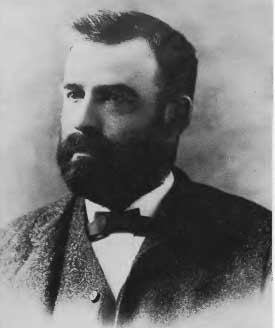- unknown (b.)
Bio/Description
An American scientist, born in Maplewood, MA, he attended Bridgton Academy in Maine and the Chandler Scientific School at Dartmouth College before entering in 1869 the Lawrence Scientific School at Harvard, where he obtained his bachelor degree in 1873. He first became interested in the possibility of mechanical calculation while there, where he had to wrestle with the problem of computing scientific tables by hand. His first attempts to build a calculating machine met with failure, but after learning of Babbage's and Scheutz's machines he began working on his own design for a difference engine, which he completed with the encouragement and assistance of several distinguished American scientists, including Wolcott Gibbs, Harvard's Rumford Professor of Chemistry, and John Batchelder, the man in charge of operating the Dudley Observatory's Scheutz machine. His paper, "On a new difference engine." In The American Journal of Science and Arts 2 (1871): 113-17; written while he was still a student at Harvard, contains his description of his machine. After publishing this paper, he continued working on designs for desk calculators, and had already obtained two calculating machine patents by the time of his graduation from Harvard in 1873. An important distinction between this difference machine and the model described in 1871 lay in the arrangement of the number wheels. It was again linear. But in the 1871 model the wheels had been grouped by place figures; all the lowest decimal values being grouped together, then the next highest decimal value, etc. Within each such group appeared first the appropriate digit of the tabular value, then the corresponding one of the first order of differences, then that of the second order, and so on. Now the numbers were regrouped: all digits of the tabular value came first, then those of the first difference, then the second, etc. As a result, the carry mechanism, which was closely related to one covered by his general purpose calculator patents, was simplified. The printing apparatus connected ten of the tabular function wheels with corresponding die-plates holding wax molds for subsequent electrotyping. Upon his graduation, his scientific benefactors supported the further development of the difference engine. In 1874 the Boston Thursday Club raised a subscription for the construction of a large-scale model, which was supplemented by a substantial support from Fairman Rogers of Philadelphia. Rogers not only supported construction of the machine, but saw to it that he exhibited the machine at the 1876 Centennial International Exhibition at Philadelphia, along with a small general-purpose calculator.
-
Gender:
Male -
Noted For:
One of the few Americans to make a significant contribution to mechanical computation prior to the end of the nineteenth century improving on the Difference Machine calculator -
Category of Achievement:
-
More Info:


